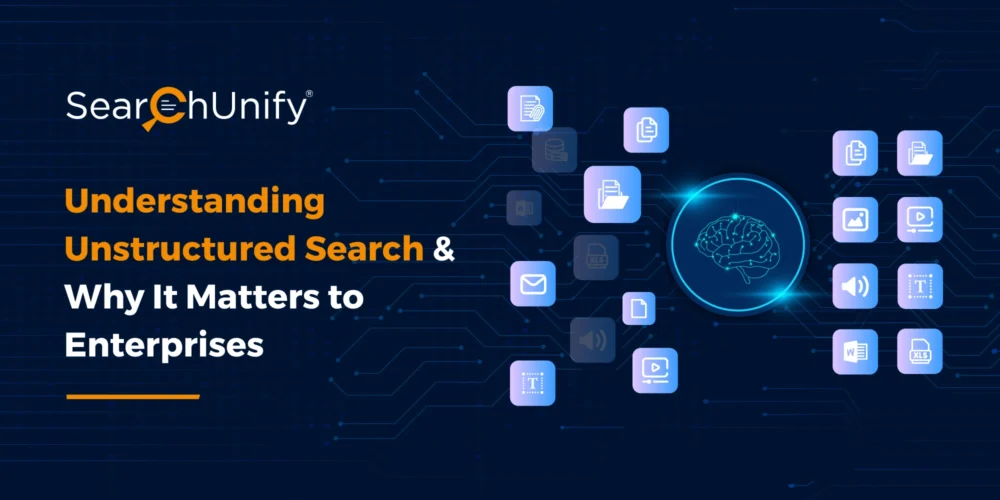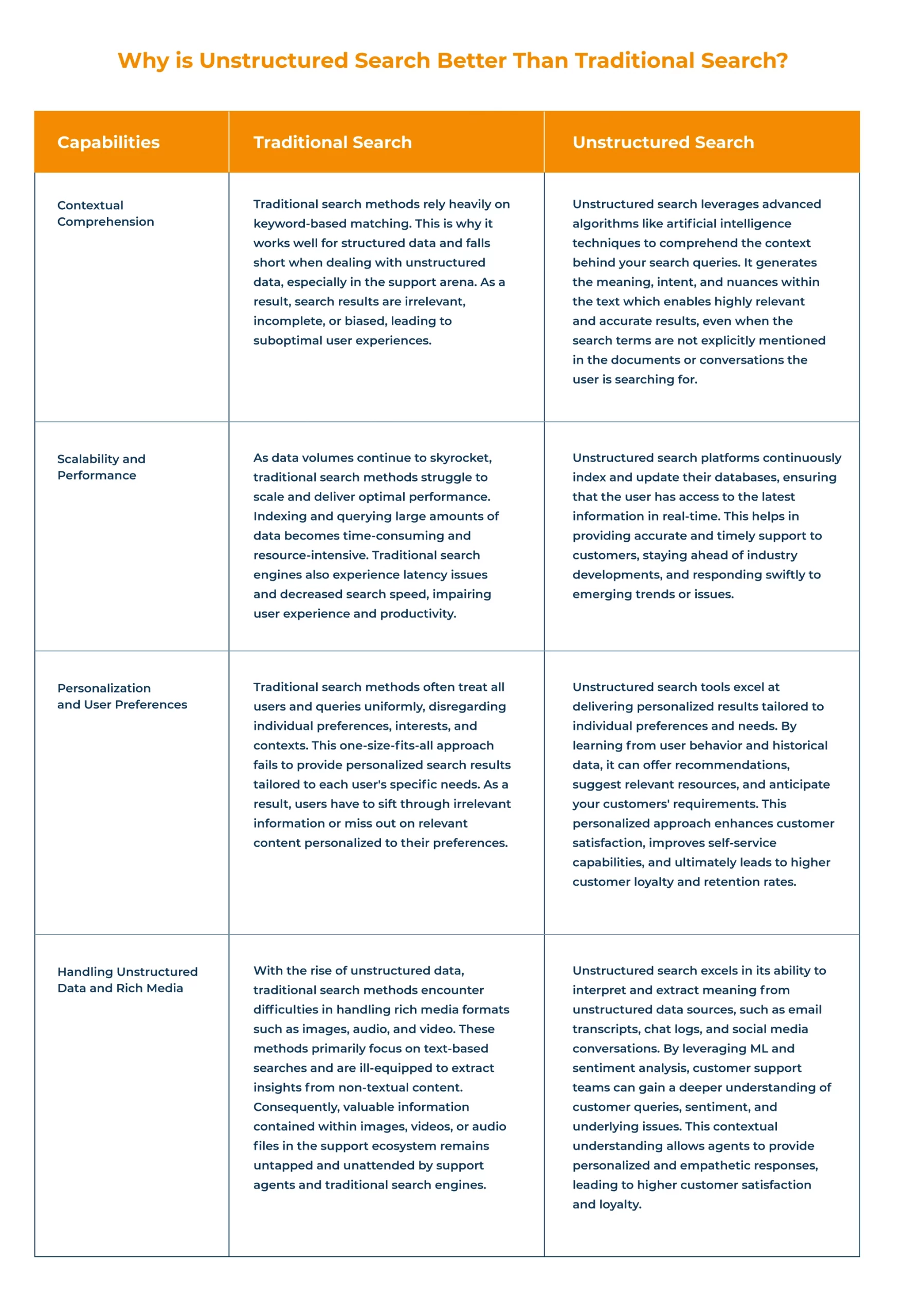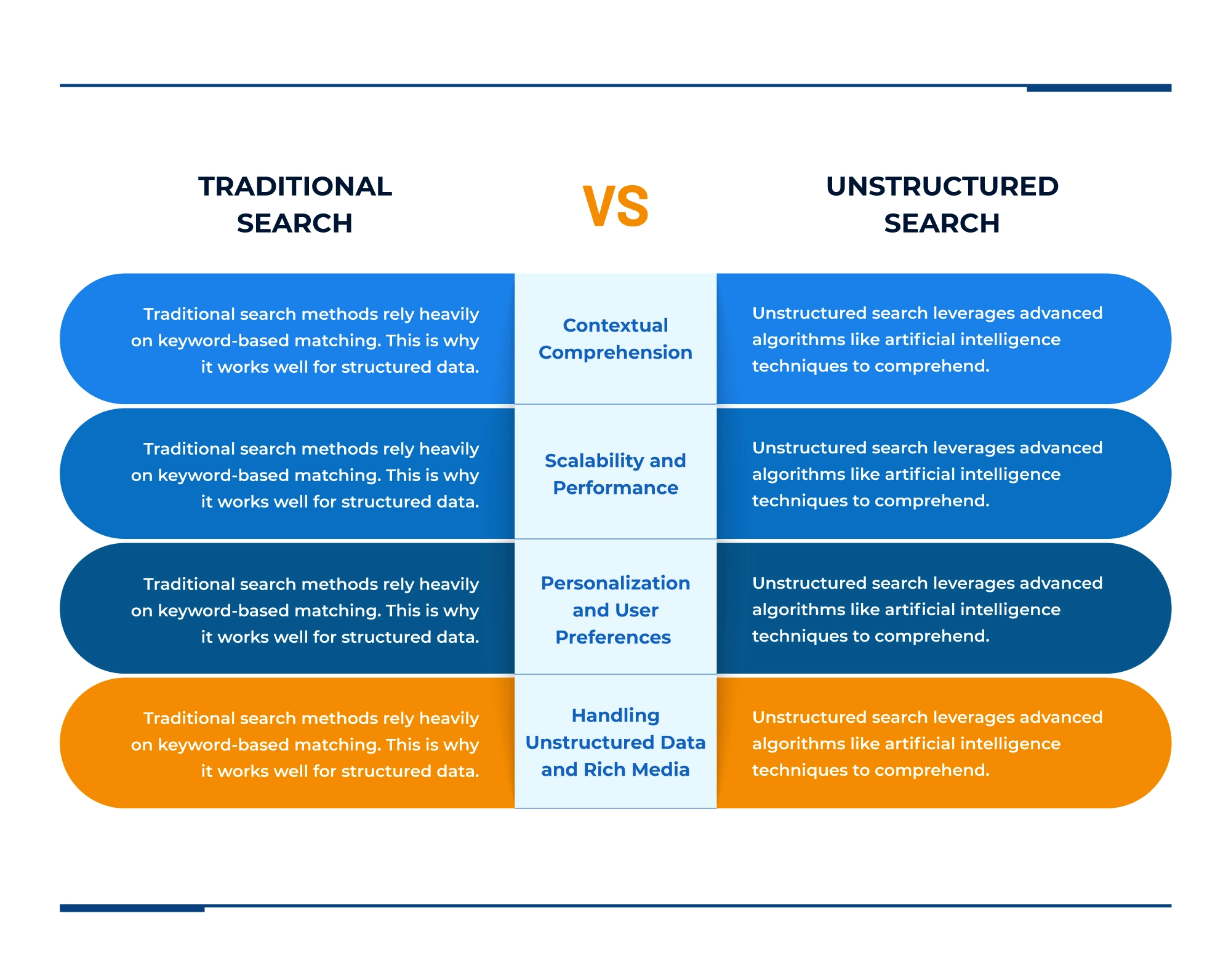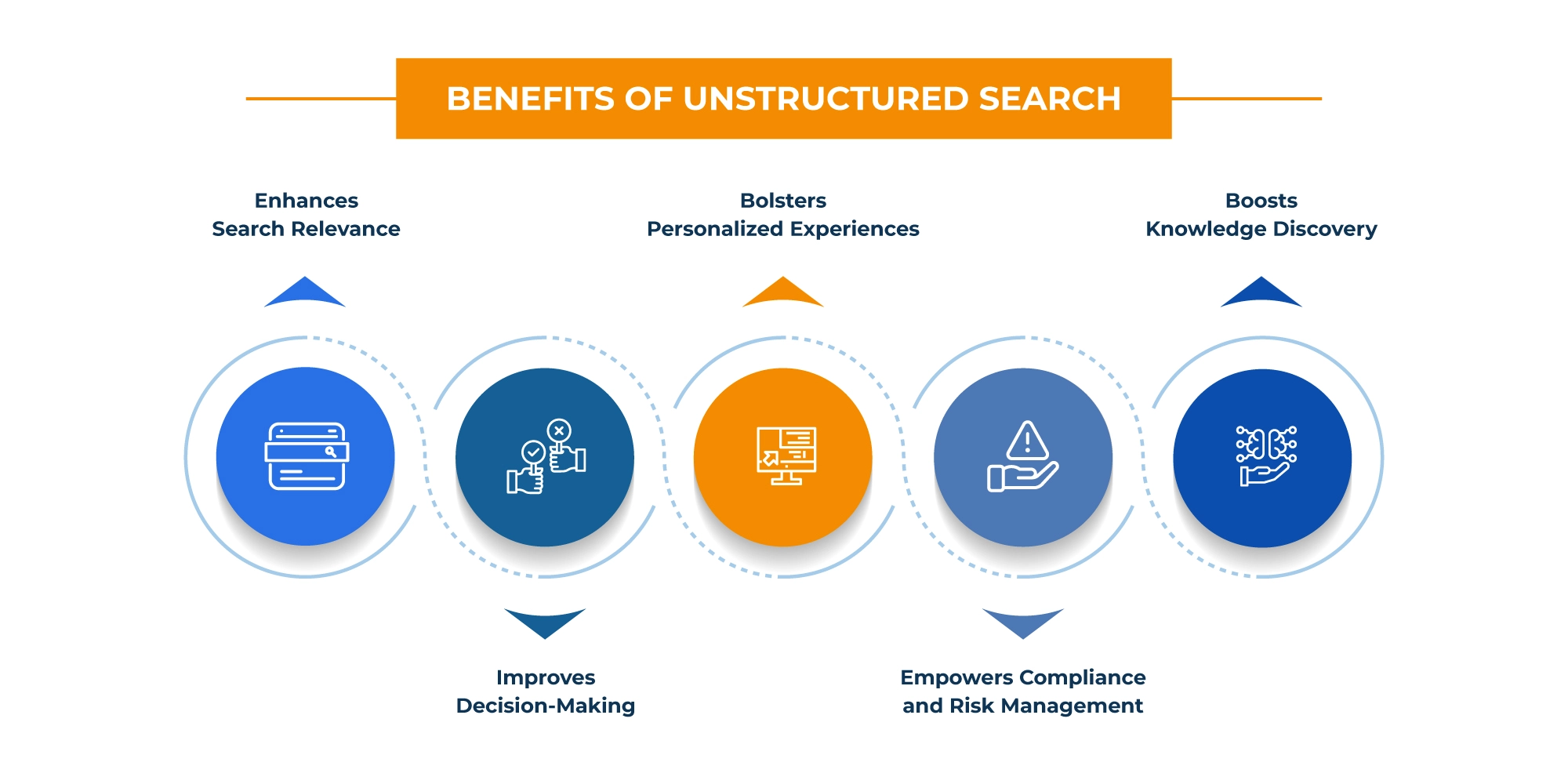
In today’s digital landscape, data is being generated at an unprecedented rate. Everyone contributes to the massive data ecosystem that surrounds us with every click, swipe, and interaction. However, not all data is created equal.
While structured data, neatly organized into databases and spreadsheets, has long been the focus of analysis and decision-making, a vast untapped resource holds immense potential: unstructured data. And this poses a lot of challenges, especially in the enterprise search space, where effectively harnessing both unstructured and structured search is becoming increasingly crucial.
But fear not, for the future holds a transformative solution: unstructured search.
It leverages advancements in Artificial Intelligence, Natural Language Processing, Machine Learning, and so on, further enhancing their effectiveness and efficiency.
In this blog post, we will explore more on the importance of unstructured search and why it has become a critical asset for modern enterprises. It will also talk about its capabilities that are revolutionizing enterprise discovery for good.
What is Unstructured Search?
Studies have shown that unstructured data will account for 80% of the total digital data volume by 2025.
It is a process of searching and retrieving data from unstructured databases such as emails, documents, social media posts, audio files, images, and videos. This is executed by leveraging AI technologies that help ML algorithms analyze patterns, semantics, and relationships within unstructured data to deliver more accurate and contextualized search results.
In spite of being a revolution, unstructured search is still not leveraged to its full potential. This is why it is important to gauge the difference between unstructured and traditional search for making an informed decision.

Exploring the Frontiers of Unstructured Search: Advanced Techniques Unveiled!

Unstructured search encompasses a range of advanced techniques that enhance search capabilities and improve the user experience such as:
- Natural Language Processing (NLP)
NLP is a branch of AI that focuses on enabling machines to understand and interpret human language. In the context of unstructured search, NLP plays a crucial role in bridging the gap between users and search engines. It enables search systems to comprehend the meaning and context behind user queries, allowing for more accurate and relevant search results. It encompasses tasks such as language understanding, sentiment analysis, text summarization, and entity recognition. - Sentiment Analysis
Sentiment analysis, also known as opinion mining, is a technique that determines the sentiment or emotional tone expressed in text. In unstructured search, it helps identify the subjective attitudes, opinions, and emotions within the content. By analyzing sentiment, organizations can gain insights into customer feedback, social media sentiment, and brand reputation. This information is valuable for making data-driven decisions, enhancing customer experiences, and improving overall business strategies. - Named Entity Recognition (NER)
Named Entity Recognition is a technique used to identify and extract named entities from unstructured text. Named entities are specific objects, such as people, organizations, locations, dates, or product names. NER algorithms analyze the text and recognize and classify these entities, allowing for more precise retrieval of information. In unstructured search, NER enhances search relevance by accurately understanding the entities mentioned in user queries and matching them with relevant documents or data sources. - Topic Modeling
Topic modeling is a powerful technique that helps uncover latent themes and patterns within a collection of documents or text. It is particularly useful when dealing with large volumes of unstructured data. By employing techniques such as Latent Dirichlet Allocation (LDA), topic modeling algorithms identify underlying topics or themes within the documents. These topics provide a high-level summary of the content, allowing users to explore related information, discover hidden relationships, and gain a deeper understanding of the data landscape. - Deep Learning
Deep learning techniques, a subset of ML, have gained significant attention in recent years for their ability to extract meaningful representations from unstructured data. Deep learning models, such as Convolutional Neural Networks (CNNs) and Recurrent Neural Networks (RNNs), can process and analyze unstructured data like images, audio, and text. In unstructured search, deep learning algorithms can learn complex patterns and relationships within the data, leading to more accurate and contextually relevant search results. - Semantic Search
Semantic search aims to understand the intent and context behind user queries to deliver more accurate search results. It goes beyond simple keyword matching and incorporates the meaning and relationships between words and concepts. Semantic search techniques utilize semantic graphs, knowledge graphs, and ontologies to build a comprehensive understanding of the data. By understanding the semantics of unstructured data, search engines can provide more relevant and precise information, improving the user experience.
Benefits of Unstructured Search

Enhances Search Relevance: Unstructured search engines excel in delivering highly relevant search results by considering the context, semantics, and relationships within unstructured data. Users can quickly find the information they need, improving efficiency and productivity.
- Improves Decision-Making: Unstructured search enables organizations to extract valuable insights from vast volumes of data using AI and ML. This is how by uncovering patterns, trends, and relationships within unstructured data, decision-makers can make data-driven decisions and gain a competitive edge in their respective industries.
- Bolsters Personalized Experiences: Unstructured search engines can personalize search results based on user preferences, behavior, and historical interactions. Personalization enhances the user experience, increases engagement, and fosters stronger customer relationships.
- Empowers Compliance and Risk Management: Unstructured search plays a crucial role in ensuring compliance and managing risks within organizations. By analyzing unstructured data sources, such as legal documents and compliance reports, AI algorithms can identify potential risks, anomalies, or non-compliant behavior. This proactive approach allows organizations to mitigate risks, adhere to regulatory requirements, and avoid costly penalties and reputational damage.
- Boosts Knowledge Discovery: Unstructured search uncovers hidden insights and connections within large volumes of data. Organizations can extract valuable information, identify trends, and make informed decisions, gaining a competitive edge in their respective industries.
Envisioning the Future: Conversational Search and Advancements in Unstructured Search
The future of unstructured search holds exciting possibilities. Integration with voice-powered assistants, chatbots, and other AI-powered interfaces enables more intuitive and conversational search experiences. Deep learning techniques and neural networks will continue to advance the analysis and understanding of unstructured data, resulting in even more accurate and personalized search results.
Embracing Unstructured Search: The Key to Unlocking Valuable Insights
Unstructured search has emerged as a game-changer in enterprise information discovery, empowering organizations to navigate the vast expanse of unstructured data with unprecedented ease. And as the volume of unstructured data continues to grow, organizations that embrace unstructured search gain a competitive advantage by leveraging the full potential of their data.
So, start practicing it today.


















